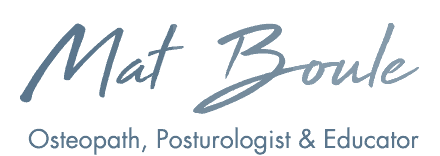Movement for Parkinson’s?
When one considers that Parkinson’s is a disease that affects motor skills, could it be possible to create positive changes with a proprioceptive approach? Read more
When one considers that Parkinson’s is a disease that affects motor skills, could it be possible to create positive changes with a proprioceptive approach? Read more
Is it possible to schematize the brain of children to better understand how they manage emotions? That’s what Daniel Siegel, a neuroscientist, tried to do! Read more
Electronic toys are quite popular amongst the little ones. Their utilization is fairly recent. Could it be that they bring about negative consequences? Read more
Could it be that there is a link between body posture and personality? Sylvain Guimond assessed 100 subjects (50 males and 50 females) to figure it out.
Subjects were all French-Canadian and between the ages of 18-82. Personality was determined by using the Myers-Briggs Type Indicator (MBTI) questionnaire.
If it’s true that posture is the neuromuscular strategy developed to resist gravity, it could be that it is also associated to our mental and emotional state.
The Myers-Briggs Type Indicator questionnaire is a psychological tool that assesses scientifically 16 different personality types.
MBTI contains four separate dichotomies:
4 types of posture were classified, based on Kendal and Kendal’s work:
Pain was also reported using a scale from 0 to 10.
Of the 100 subjects studied, 22 of them had ideal posture, 36 were kyphotic-lordotic, 19 had flat back posture, and 23 had sway back posture.
Overall, 65% of the subjects tested as extraverted and 35% as introverted.
In ideal posture, 21 of the 22 subjects were extraverted. In kyphotic-lordotic postures, 30 of the 36 subjects were extraverted. In flat back postures, only 8 of the 19 subjects were extraverted. Finally, in sway back postures, 17 of the 23 subjects were introverted.
In summary, these results clearly demonstrate a relationship between a person’s demeanour and their posture.
So the question is, if we optimize posture, do we modulate personality?
https://journals.plos.org/plosone/article?id=10.1371/journal.pone.0037450#pone.0037450.s001
During mammalian embryogenesis, determination of three body axes takes place. First, the embryo assumes an AP axis, soon to be followed by the development of the dorsal-ventral axis. Then, after quite a delay, the third and final symmetry break happens: that between left and right. The node coordinates determination of the left-right body axis. Read more
Is it important if you want to impress your significant other on the dance floor? Absolutely. Could it be relevant in other instances? Based on recent research, it sure seems like it! Read more
This is not my first blog post on the non-motor roles of the cerebellum and, based on where research is heading, it won’t be my last! Read more
Most of us consider that when dealing with an ear problem, what you are managing is a difficulty with hearing. Read more
La plupart d’entre nous considérons que, face à un problème d’oreille, vous gérez une difficulté à entendre. Read more
It’s now been a few years that I have been advocating for improving balance in subjects that suffer from chronic pain. Neurologically and mechanically speaking, there are a multitude of reasons why this makes sense. Read more
Mat Boulé, Osteopath, Posturologist, Educator
(514) 880-5424
Le Hub 288 (Mon Tues):
288 Bd Curé-Labelle, Laval, QC H7P 0B2
Adrenaline Performance (Wed Fri):
8158 Chemin Devonshire, Mont-Royal, QC H4P 2K3
Athletik One (Thu):
2068 Trans Canada Route, Dorval, Quebec H9P 2N4
Centre Umanité (Sat):
500 Boul des Seigneurs #201, Terrebonne, QC J6W 1T3
